Title : 'Welcome to the hotel microbialifornia' - A six months spatial and temporal study of sea bass aquaculture tank bacterial communities
Abstract:
Within the realm of seafood production, aquaculture is a pivotal domain, where the intricate dynamics of microbial communities bear significant ramifications for fish health and production efficiency. In aquaculture, particularly in the context of sea bass (Dicentrarchus labrax) farming, Vibrio harveyi has gained notoriety as a significant pathogen responsible for causing vibriosis. This bacterial disease can have devastating consequences for farmed fish populations. Understanding the interactions between V. harveyi and the microbial communities within sea bass aquaculture systems is critical for developing effective disease management strategies. Our study aimed to explore the spatial heterogeneity of microbial populations across the water column within a 4-meter-deep aquaculture tank housing sea bass over a six-month timeframe while monitoring the abiotic parameters. Utilizing Next Generation Sequencing with a specific focus on the V4-V5 region of the 16S rRNA gene, we aimed to comprehensively unravel the intricate details of microbial communities across depths and sample types.
To achieve this, we collected samples at three different depths within the tank: the top, middle, and bottom. These samples encompassed two sample types: water samples to investigate planktonic microorganisms and concrete block samples to delve into the microbial biofilm communities.
Our results not only revealed substantial variations in microbial populations between the two sample categories but also unveiled pronounced differences among the various depths. Notably, the Vibrionaceae family emerged as one of the most abundant among all families in the samples, and it remained consistently present throughout the entire sampling campaign. This underscores the pivotal influence of both sampling strategies and spatial factors on the complex microbial dynamics within the aquaculture system.
This research significantly enhances our comprehension of the intricate relationships between microbial communities, aquaculture conditions, and environmental factors within sea bass aquaculture settings. It is essential to highlight that the emergence of vibriosis does not appear to be solely connected to the resurgence of Vibrio bacteria from other bacterial groups. Instead, it can result from a combination of the interactions of these microbial communities.
This complex emergence may also be linked to abiotic parameters, emphasizing the multifaceted nature of the factors contributing to the development of vibriosis. Therefore, it becomes essential to underscore the need for an additional study, that we are currently conducting, explores the underlying factors that contribute to the virulence of this bacterium. Conducting such complementary research is crucial in achieving a comprehensive grasp of these microbial dynamics and in advancing sea bass aquaculture practices.



